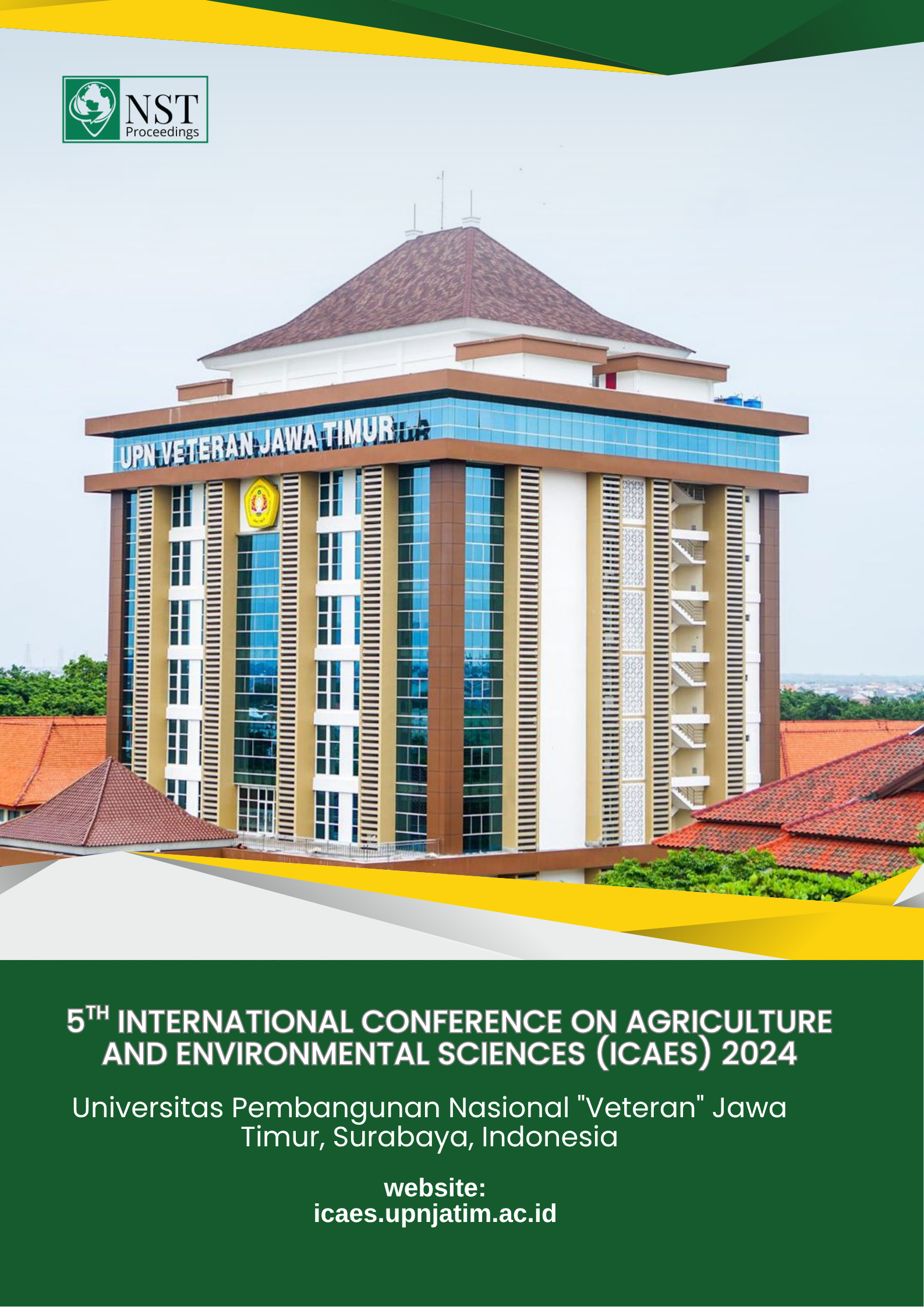Combination of Phytoremediation and Phytomining Treatment as an Alternative Solution to Overcoming Heavy Metal Contamination in Soil
DOI:
https://doi.org/10.11594/nstp.2025.4911Keywords:
In-situ, waste, agriculture, remediationAbstract
Contamination by heavy metals has affected numerous facets of human life over the past few decades. These pollutants originate from diverse human activities, including agriculture, industry, mining, transportation, energy production, and even routine domestic practices. Heavy metal pollution exerts detrimental effects not only on humans but also on animals, plants, and microorganisms. Exposure to heavy metals can inhibit plant growth, leading to suboptimal yields. Moreover, the accumulation of heavy metals within plant tissues poses significant risks to animals and humans who consume them. Consequently, effective strategies are necessary to mitigate the environmental impacts of heavy metal pollution. This article explores phytoremediation and phytomining as sustainable approaches to address heavy metal contamination. In-situ phytoremediation offers a more cost-effective option compared to conventional remediation methods, enabling large-scale application. For economic feasibility, phytoremediation efforts can be integrated with phytomining, which provides an environmentally friendly and low-cost method for extracting valuable metals. Plants chosen for phytoremediation and phytomining should exhibit traits such as high stress tolerance, rapid growth rates, and substantial biomass production.
Downloads
References
Ali, H., Khan, E., & Sajad, M. A. (2013). Phytoremediation of heavy metals-Concepts and applications. Chemosphere, 91(7), 869–881. https://doi.org/10.1016/j.chemosphere.2013.01.075
Anderson, C., Moreno, F., & Meech, J. (2005). A field demonstration of gold phytoextraction technology. Minerals Engineering, 18(4), 385–392. https://doi.org/10.1016/j.mineng.2004.07.002
Bruemmer, G. W., Gerth, J., & Herms, U. (1986). Heavy metal species, mobility and availability in soils. Zeitschrift Für Pflanzenernährung Und Bodenkunde, 149(4), 382–398. https://doi.org/10.1002/jpln.19861490404
Budovich, L. S. (2021). Effects of heavy metals in soil and plants on ecosystems and the economy. Caspian Journal of Environmental Sciences, 19(5), 1009–1015. https://doi.org/10.22124/cjes.2021.5331
Chen, X., Kumari, D., Cao, C. J., Plaza, G., & Achal, V. (2020). A review on remediation technologies for nickel-contaminated soil. Human and Ecological Risk Assessment, 26(3), 571–585. https://doi.org/10.1080/10807039.2018.1539639
D’Amore, J. J., Al?Abed, S. R., Scheckel, K. G., & Ryan, J. A. (2005). Methods for Speciation of Metals in Soils. Journal of Environmental Quality, 34(5), 1707–1745. https://doi.org/10.2134/jeq2004.0014
Handayanto, E., Nuraini, Y., Muddarisna, N., Syam, N., dan Fiqri, A. (2017). Phytoremediation and Phytomining of Heavy Metals Contaminating Soils.. Malang: UB Press.
Liu, L., Li, W., Song, W., & Guo, M. (2018). Remediation techniques for heavy metal-contaminated soils: Principles and applicability. Science of the Total Environment, 633(302), 206–219. https://doi.org/10.1016/j.scitotenv.2018.03.161
Marmiroli, N., & Monciardini, P. (1999). PHYTONET (http://www.dsa.unipr.it/phytonet), a thematic network devoted to the scientific, economical, environmental, and social aspects of phytoremediation. International Journal of Phytoremediation, 1(2), 125–138. https://doi.org/10.1080/15226519908500011
Rizvi, A., Zaidi, A., Ameen, F., Ahmed, B., Alkahtani, M. D. F., & Khan, M. S. (2020). Heavy metal induced stress on wheat: Phytotoxicity and microbiological management. RSC Advances, 10(63), 38379–38403. https://doi.org/10.1039/d0ra05610c
Sheoran, V., Sheoran, A. S., & Poonia, P. (2009). Phytomining: A review. Minerals Engineering, 22(12), 1007–1019. https://doi.org/10.1016/j.mineng.2009.04.001
Sperdouli, I. (2022). Heavy Metal Toxicity Effects on Plants. Toxics, 10(12), 1–4. https://doi.org/10.3390/toxics10120715
Ullah, N., Rehman, M. U., Ahmad, B., Ali, I., Younas, M., Aslam, M. S., Rahman, A. U., Taheri, E., Fatehizadeh, A., & Rezakazemi, M. (2022). Assessment of heavy metals accumulation in agricultural soil, vegetables and associated health risks. PLoS ONE, 17(6), 1–14. https://doi.org/10.1371/journal.pone.0267719
USEPA. (2017). Superfund remedial investigation/feasibility study (site characterization). U.S. Environmental Protection Agency: Washington, DC. https://www.epa.gov/superfund/superfund-remedial-investigationfeasibility-study-site-characterization (accessed 12 October 2023)
Zhan, S., Wu, Y., Wang, L., Zhan, X., & Zhou, P. (2016). A mini-review on functional nucleic acids-based heavy metal ion detection. Biosensors and Bioelectronics, 86, 353–368. https://doi.org/10.1016/j.bios.2016.06.075
Downloads
Published
Conference Proceedings Volume
Section
License

This work is licensed under a Creative Commons Attribution 4.0 International License.
Authors who publish with this proceedings agree to the following terms:
Authors retain copyright and grant the Nusantara Science and Technology Proceedings right of first publication with the work simultaneously licensed under a Creative Commons Attribution License that allows others to share the work with an acknowledgement of the work's authorship and initial publication in this proceeding.
Authors are able to enter into separate, additional contractual arrangements for the non-exclusive distribution of the proceedings published version of the work (e.g., post it to an institutional repository or publish it in a book), with an acknowledgement of its initial publication in this proceeding.
Authors are permitted and encouraged to post their work online (e.g., in institutional repositories or on their website) prior to and during the submission process, as it can lead to productive exchanges, as well as earlier and greater citation of published work (See the Effect of Open Access).














